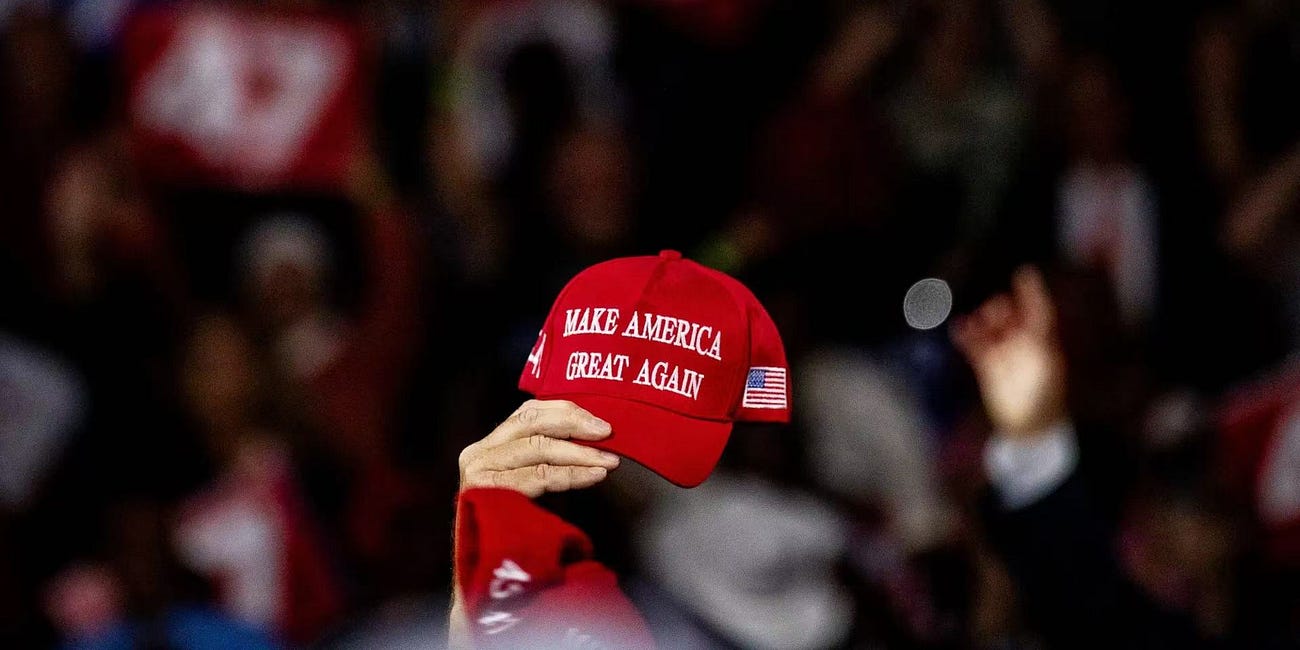Chinese Garment Industry’s Mixed Response to Tariff Truce
While some anxiously wait for the other shoe to drop, others keep their shirt on
While the Xi-Trump call recharged the momentum behind the Geneva consensus, it remains uncertain what tariff deal will eventually emerge by mid-August between the world’s biggest manufacturing power and the largest consumer market. Anxiety seems to be simmering, especially in the price-sensitive textile sector.
Compared with automobiles, machinery, steel, and other Chinese goods that have fueled Trump’s grievances for Beijing’s alleged “unfair trade practices,” it is the textile and apparel industry, often dismissed as “low-end manufacturing,” that stands as a real hidden giant of China's export economy. From Beijing’s accession to the WTO in 2001 to the first China-U.S. trade war in 2018, the textile sector accounted for 75% of the country’s trade surplus. Its share still hovered around 30% when China’s annual trade surplus ballooned to a record $1 trillion in 2024.
Even under the 90-day truce starting May 12, which lowered additional duties from a staggering 145% to 30%, Chinese textile exports bound for the U.S. still face an average tariff of 54%.
“The Biggest Problem is not High Tariffs, But Uncertainty”
“Whether it is 30%, 54%, or even 145%, all we ask for is a stable duty rate,” snapped Hu Juncheng. Hu is the director-general of a privately-owned garment company based in Jiangxi Province, on the outskirts of the Yangtze River Delta—the heart of China’s textile clusters. With annual revenues of $100–200 million, his company exports 80% of its products to the United States.
Ironically, Hu now finds himself in a bigger dilemma under the temporary tariff relief than during the peak of China-U.S. trade tensions in April. When tariffs skyrocketed to 145%, Hu’s American buyers agreed to shoulder most of the additional costs. But when the rate dropped to 30%, they shifted the burden entirely onto Hu, demanding that he absorb all the remaining duties and eat the losses.
“It’s a psychological game,” Hu said. “When levies soared through the roof, no one expected producers like us to deliver, so clients who desperately needed the cargo had to sit down and talk money.” But after the tariff pause, Hu lost his bargaining power, as buyers believe Chinese suppliers stand to lose everything if the finished goods stay un-shipped.
Ever since the last trade war in 2018, the tariff settlement models for most Chinese garment exporters have changed from “Free On Board” (FOB), where buyers are responsible for all extra costs incurred during and after shipment, to “Delivered Duty Paid” (DDP), where sellers cover all custom procedures and fees. Hu’s company is no exception. “We have to adapt to the growing competition in the market,” Hu said.
Riding the tariff roller-coaster in April and early May, Hu hurried to renegotiate deals one by one, scrambling to persuade buyers to split the surging tariff bills. The 90-day tariff pause has brought yet another ordeal, as he now has to renegotiate already renegotiated deals, while pricing for orders scheduled for delivery after August remains in limbo.
Uncertainty drains time, energy, and money. To hedge against the unknown risks ahead, Hu capped this year’s orders at 3 million units—well below the company’s annual output of 5 million garments when it was running at full tilt.
Shipping costs have become another source of uncertainty. The rebound in China-U.S. trade following the May 12 Geneva announcement has driven freight rates steadily higher.
According to Luo Bin, head of an apparel factory that also primarily targets the U.S. market, the shipping price for a 40-foot high cube container to Los Angeles doubled from $2,000 to $4,000 by the end of May. The rate is expected to jump further to over $6,000 in June.
While China’s exports to the U.S. fell by around 20% in April, after Trump announced the “reciprocal tariffs,” the country’s total export freight volume rose by 5.9% over the same time frame. This suggests that the spikes in exports to non-U.S. markets have offset the decline in China-U.S. trade. It came with a surge in freight rates from China to Southeast Asia, approaching the cost of shipping to America.
And now, the trend has reversed. But whichever way the tide is turning, the cost spike is unavoidable for both sellers and buyers.
“For these 90 days, we are simply wrapping up the previous orders, keeping the factory running,” Luo said. “I just want the tariff rate to stay steady in the foreseeable future, whatever that rate might be.”
Tradeoff Decisions to Go Overseas
To circumvent uncertainty altogether, it may seem intuitive for Chinese garment suppliers to move production overseas. But that might just introduce another kind of uncertainty.
“Many clothing factories in Southeast Asia and Africa are also owned by Chinese investors, and we’ve received offers from some of them to set up operations there,” Luo said. “But I nipped the idea in the bud. Doing business abroad is no easier.”
Since Trump’s self-vaunted “Liberation Day,” Cambodia and Vietnam initially faced an even higher U.S. tariff wall than China. Their prospects as ideal alternative export bases remain uncertain, as Trump’s bilateral tariff talks with them have seen little progress.
Yet, many Chinese apparel manufacturers have realized that embracing a more globalized supply chain is the key to minimizing exposure to future risks.
Ms. Zhang, deputy head of a 45-year-old garment firm in Guangzhou, said foreign buyers had encouraged the company to move production abroad as early as 2012. But venturing beyond China’s highly sophisticated supply chains was no easy task. Their relocation plan was eventually put on hold due to the outbreak of the global pandemic.
Right as Washington and Beijing exchanged tariff “nukes” in April, Zhang’s company received $30 worth of a sample from an American client, but ended up paying over $1,000 in tariffs just to clear it through customs. This episode served as a wake-up call.
“We originally prepared to move everything offshore after April 2,” Zhang said. Even though she and the other board members breathed a sigh of relief after the Geneva truce, they made a strategic decision to pivot to global supply chains.
Interestingly, this apparel company, whose coming-of-age story parallels that of China’s reform and opening-up, used to focus primarily on the European market 20 years ago. Now, however, orders from the U.S. account for 70% of its business. It is a telltale sign that some Chinese manufacturers are still heavily reliant on the American market.
As it turned out, the opposite is also true. Upon the promulgation of Trump tariffs on April 2, Zhang received numerous calls and emails from American buyers, urging her company not to give up on their orders. “We’re on opposite ends of the same supply chain,” Zhang said. “It takes a lot of effort on their part, too, to find the right supplier.”
Therefore, in the darkest days in April, Zhang’s company continued production at full capacity, even though it was not making any profit. Their slogan of the month was “preserve clients, preserve orders.” Zhang believes their bond with the clients will be forged even stronger once they get through this tough time.
Zhang and her partners’ decision to move production to other emerging markets is emblematic of Chinese manufacturers’ resolve to preserve the mutually beneficial China-U.S. economic interdependence that the likes of Trump are only too careless to sustain.
From time to time, Zhang referred to Trump (“te lang-pu” in Mandarin) as “Mr. Whimsical” (“te mei-pu” in Mandarin). “We will adjust our strategy accordingly,” she said. “You’ve got to have faith in the wisdom of the Chinese.”
“Whoever Sits in the White House, Americans Will Still Need Clothes”
Nothing is certain except death and taxes, but the recent deluge of customs tax doesn’t seem to inflict the same level of pain on everyone.
“As our great leader Mao Zedong once said, don’t panic over something that hasn’t happened yet.” When asked about the uncertainty surrounding the ongoing China-U.S. trade talks, Su Pengfei appeared to have misattributed this quote to the founding father of the People’s Republic of China. Su is the manager of the wool knitwear division at a Shanghai-based state-owned enterprise with $700 million in annual exports, half of which is directed at America.
After a brief suspension of delivery in April, Su and his team have now resumed full-scale production. “The CEO of an American buyer is flying to Hong Kong in June to meet with our top brass for future cooperation,” Su said. “Both parties have been positive about future outlooks after May 12.”
His steadfastness is not without reason. Even though the FOB model has become the industry norm, Su’s enterprise still handles most of its export orders under the DDP model. The company’s global production network, which has gradually taken shape since Trump launched the previous trade war in 2018, now stretches across Cambodia, Bangladesh, Ethiopia, and other developing countries.
At the same time, Su’s company has been “derisking” from the American market, eyeing a sales expansion in Europe, Australia, and Latin America. He expects the future orders from the U.S. to drop to around 30%.
The industrial upheavals brought about by tariffs are nothing new to the company Su works for, whose predecessor was the Shanghai Bureau of Textile Industry. During the 1980s, it once took control of half of China’s textile output, and made up about 40% of Shanghai’s total foreign exchange income. The bureau, with over 500,000 employees, had to go through a painful reform in the early 1990s, as Shanghai lost its competitive edge of cheap labor and the automobile industry began to take its place as the city’s economic pillar. It later morphed into a major textile conglomerate that is still one of the biggest in China.
It is Su’s belief that the core competitiveness of the textile industry still lies in technological advancement, particularly in the areas of materials, dyeing, and pattern design. Although the company has established a global footprint, its design and R&D department remains in Shanghai.
Su stressed that the most skilled professionals in the industry are still in China, where one experienced Chinese technician can easily outperform three or four Southeast Asian workers. Only China has the most complete supply chain capable of serving the world’s largest consumer market, the United States.
“Whoever sits in the White House, Americans will still need clothes. Right?” Su said.
For a detailed analysis of the ongoing U.S.-China trade talks, we recently interviewed China’s leading trade expert Cui Fan. Here’s full text:
Parsing U.S.-China Trade Talks
The Beijing-Washington Geneva talks put the tariff war on hold, but its possible outcome and implications for the future trajectory of U.S.-China trade relations are yet to be anatomized. We interviewed Cui Fan崔凡, a professor at the University of International Business and Economics (UIBE) and a standing council member of the China Society for WTO Studi…
You may also be interested in this analytical article we wrote one month before Trump’s inauguration. It incorporates an all-round analysis of the Chinese economy’s resilience against the U.S. tariff spikes. Read full text:
How Ready is China for Trump Tariffs 2.0?
In 1784, one year after the American War of Independence concluded, a merchant schooner named “Empress of China” sailed halfway around the globe from the Thirteen Colonies’ New York to China’s Guangzhou, marking the dawn of the biggest trading relations the world has ever seen. In about a month, however, this time-honored trade link between the two grea…
Xu Zeyu, founder of Sinical China, is a senior journalist with Xinhua News Agency. Email: xuzeyuphilip@gmail.com
Subscribe to Sinical China for original feature stories and in-depth analyses of Chinese politics, economy, and foreign policies.





thanks for sharing the unique perspective to present a complicated picture for those involved in the trade war